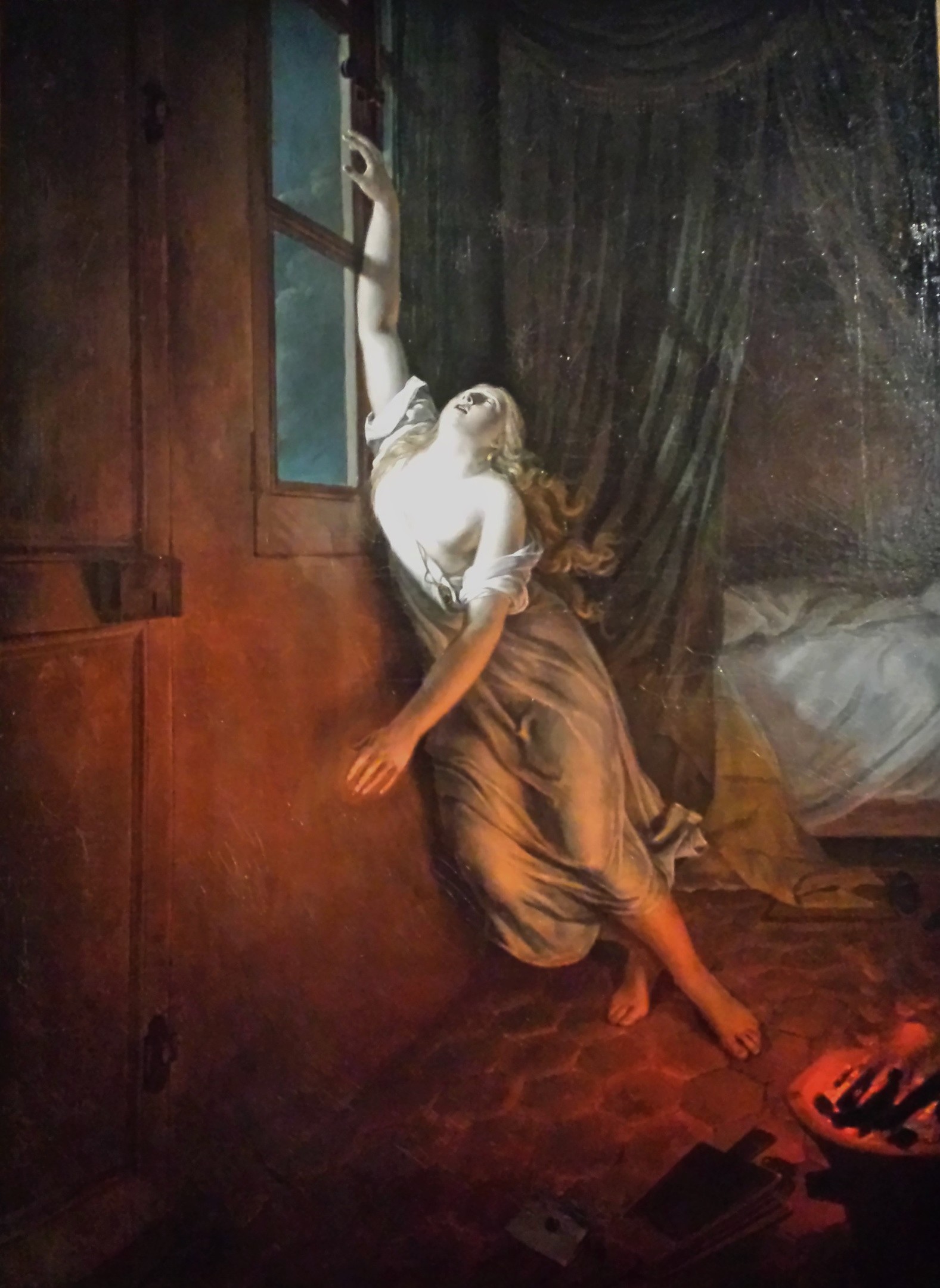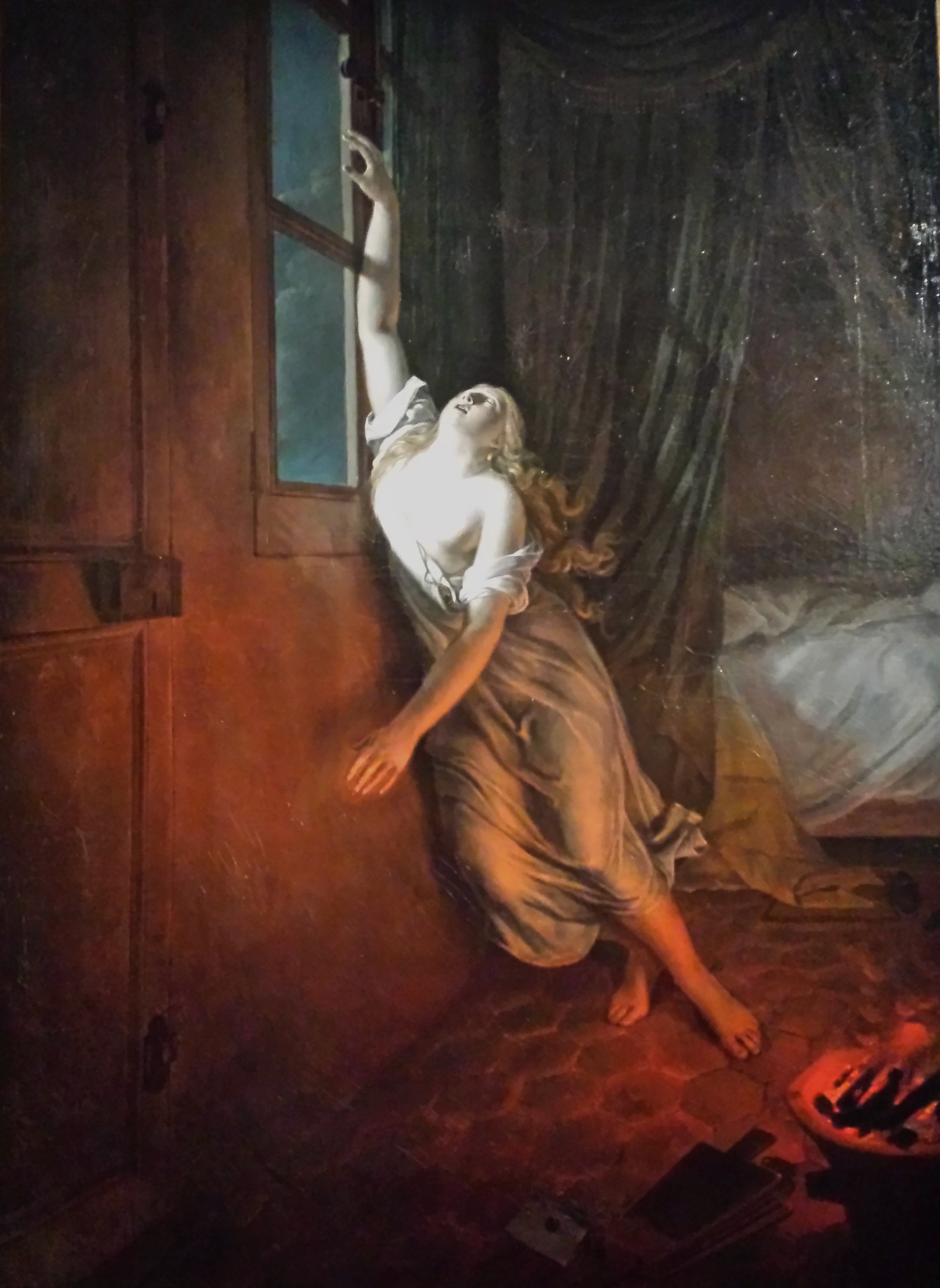Charles Desains (1789-1862) is a French painter almost totally forgotten nowadays. Born in the city of Lille, he was the student of David and then Watelet. Although his father was an industrialist, Charles was always attracted to painting. His love for the arts led him to Paris where he became friends with several artists such as Horace Verne, Paul Delaroche, and Coudert. As a painter he was active in Paris mostly between 1819-1834. Besides his works as a painter he was also a writer and is the author of a book of fairy tales inspired by La Fontaine.
If Charles Desains is forgotten today it is because he dedicated himself mostly to teaching rather than producing many masterpieces. Giving private lessons, he was also a teacher of drawing in the École Normale of Paris. Very involved in the local academic life, he became president of the Société Philotechnique of Lille as well as the president of the Société Académique of Saint-Quentin.
An Asphyxiated Woman was presented in the Salon of Paris in 1822 where it received honors from the critics. A young woman, victim of the toxic smokes of a brazier, left her bed and tries desperately to open the window. In the 19th century it was very common for painters to use scientific subjects for their paintings to show the danger of some scientific discoveries. Some art historians think that the woman actually tried to commit suicide after reading a letter (on the floor) but then regretted her attempts and tried weakly to save her life. In fact this painting is inspired by the Romanticism movement. Here Charles Desains is trying to focus on the dramatic side of the Romanticism when other painters only depicted an idealized romanticism. The young woman, in this hopeless movement of opening the window, is reminiscent of a famous painting by Fragonard, The Lock.
- Tony Goupil


 Charles Porphyre Alexandre Desains
Charles Porphyre Alexandre Desains